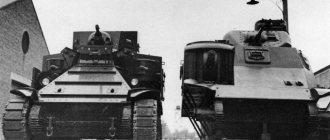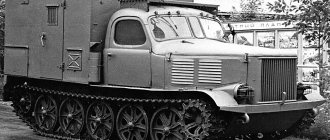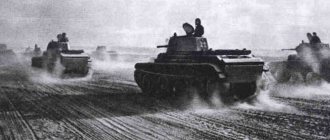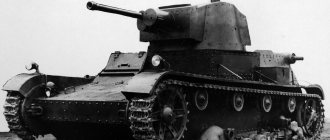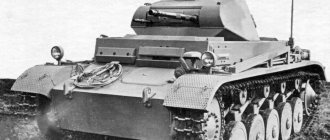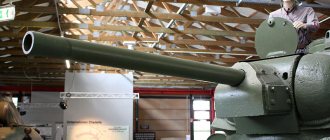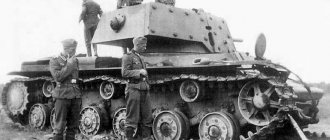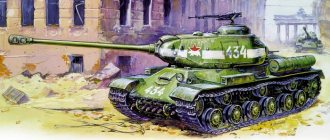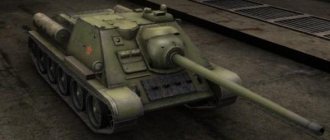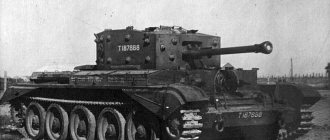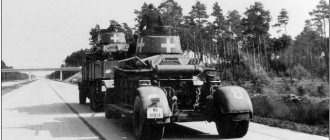Good day, friends, and welcome to aces.gg! Today our guest is an unprecedentedly powerful and unique machine among its classmates, a German tank destroyer of the seventh level, and in front of you is the Sturer Emil guide.
This unit is located in one of the most popular development branches, at the end of which now stands Grille 15, which replaced the famous waffle. For this reason, Sturer Emil performance characteristics are somewhat similar to vehicles of this branch (lack of armor, powerful weapons), but first things first.
TTX Sturer Emil
As usual, we will start with the general parameters of the tank and considering the Sturer Emil characteristics, it is difficult to find any obvious advantages, everything here is either very mediocre or refers to disadvantages.
For example, like most tank destroyers at level seven, the safety margin here is not too large. At the same time, we have cardboard armor, and large dimensions only worsen the situation, so we need to behave extremely carefully.
In terms of mobility, the Sturer Emil tank is also not very good, the maximum speed is low, the engine power is not enough to gain it quickly, the dynamics are weak, in general, this German can without hesitation be called quite tight. The only relatively good parameter in this bunch is the chassis turning speed.
Our camouflage coefficient is far from the best at the level, and as for visibility, in the basic configuration it is 370 meters, both of these parameters will need to be improved.
Booking
The safety factor of EMIL I is 1,400 units. The strongest part of the tank is the frontal projection of the turret. The turret armor parameters are 180/35/20 mm. We see that it will be difficult for our classmates to break through us, but when playing at the bottom of the list you need to be extremely careful, especially if enemy vehicles charge gold.
Hull armor is determined by the value 100/20/30 mm. In principle, it is advisable to hide the body, because even the seventh level equipment is capable of penetrating the upper armor plate and NLD.
The side armor is even weaker. Here the best tactic is to simply hide this part of the hull from the enemy’s gaze. You can, of course, see parts of the airborne projection where projectiles could ricochet, but this will not happen often, so it is safer to simply not check the likelihood of ricochet.
gun
Many people have probably already asked why we called this tank destroyer unprecedentedly powerful, given so many shortcomings. It’s simple, our main strength is in armament, in fact, the Sturer Emil gun is all that this unit has, and it is for the gun that it is so loved, respected and feared. First of all, it is worth saying that we are the owners of a huge alpha strike and although the rate of fire leaves much to be desired, each shot of such power at the target, especially when the damage is above average, brings a lot of pleasure. Just try to shoot with confidence, because our ammunition supply is very small, only 15 shells.
Another unique feature of the Sturer Emil World of Tanks tank destroyer is the fact that the 128 mm gun does not have gold shells, however, the basic armor penetration is more than enough, even when we are at the bottom of the list.
Regarding accuracy, everything is still quite good, good dispersion, normal aiming time, but poor stabilization, but we are quite capable of firing at long distances. By the way, another huge advantage is the fact that the Sturer Emil WoT gun goes down as much as 15 degrees, you should always remember this.
Historical reference
Historically, Stubborn Emil (this is how the name of this self-propelled gun is translated) is a project of a promising self-propelled artillery installation. Work on the vehicle began in May 1941 with a 128 mm gun. Two copies were made in “metal”, which underwent military tests in 1942-1943 as part of the 521st heavy anti-tank fighter division, Army Group South. Both prototypes had their own names - Max and Moritz. They were also used during the Battle of Stalingrad. One of the prototypes was captured by the Red Army, the second was destroyed during the bombing.
Advantages and disadvantages
Analysis of the main characteristics and parameters of the weapon is left behind and all the strongest and weakest sides of this unit are visible to the naked eye. However, for ease of perception, we will consider all the nuances separately.
Pros: • Huge alpha strike; • Excellent armor penetration with a basic projectile; • Comfortable vertical aiming angles; • Good accuracy.
Cons: • Lack of reservation; • Large dimensions; • Poor mobility characteristics; • Low damage per minute; • Poor stabilization; • Mediocre review.
Equipment for Sturer Emil
You should choose additional modules for this unit not only based on strengthening your strengths and leveling out your weaknesses, but also by relying on game tactics. Looking ahead, I will say that for most of the battle we will be standing in the bushes on the second or third line, and therefore the equipment on the Sturer Emil is selected as follows: 1. - always a popular choice, especially considering the fact that our damage per minute is far from the best best. 2. - bushy gameplay and poor visibility, the choice is obvious. 3. - and again relying on the style of play, and also taking into account the rather large dimensions of this machine, raising the camouflage will not be superfluous. Of course, there is an alternative to the second or third point - this. This option will give us the opportunity to make a shot faster and more accurately, but everyone makes their own choice.
Equipment for Emil I
When choosing consumables, we rely on one rule. If there is no silver, we take a standard set in the form:
- small first aid kit;
- small repair kit;
- hand fire extinguisher.
If there is enough silver to take the premium set, we take it:
- large first aid kit;
- large repair kit;
- coffee with pastries.
Tactics for playing Sturer Emil
We do not have good mobility at our disposal, the armor is completely cardboard, so remembering what was briefly mentioned earlier, and taking into account the selected equipment, combat tactics on the Sturer Emil will be positional.
We feel most comfortable standing in the bushes on the second or even third line. The main task is to take a position from which a good shot will open, while playing on the Sturer Emil WoT tank destroyer, do not forget about the escape routes in case of difficult or unforeseen situations.
Try to glow as little as possible throughout the battle, firing a shot and inflicting very, roll back, significant damage, roll back. At the same time, the German Sturer Emil tank can play very confidently depending on the terrain. This means that you can show only a small part of your cabin from behind the hill and inflict damage this way; excellent vertical aiming angles allow this.
Otherwise, always keep an eye on the mini-map, try to provide maximum possible support to your allies, but take care of your precious margin of safety. Don't forget to hide from the artillery and don't let the enemy's maneuverable tanks get close to you, the Sturer Emil World of Tanks is very easy to spin. Standing in one bush for the entire battle is also not a good idea; you need to move periodically, thereby reducing the chance of being discovered.
On a rejected chassis
The idea of creating a self-propelled artillery unit capable of fighting long-term fortifications was born in the minds of German designers even before the start of World War II. At the beginning of 1938, the Krupp concern began developing a self-propelled gun armed with a 105 mm K18 gun. The vehicle was developed on the basis of the PzKpfw IV and was created for a very specific purpose - to combat long-term fortified points on defensive lines. The vehicle received the designation Pz.Sfl.IVa. At the same time, the German military understood that the 10 cm K18 gun was powerful, but not sufficient to combat the most protected firing points. For this reason, in 1939, the question of creating an even more powerful “pillbox destroyer” was raised.
12.8 cm Flakzwilling 40/2, the most famous modification of the Flak 40. These guns were used in the air defense system of Berlin and Vienna
Armament for him was found quite quickly. Just at this time, work was underway to create a 128-mm anti-aircraft gun 12.8 cm Flak Gerät 40, adopted for service as the 12.8 cm Flak 40. The gun was developed by designers of the Rheinmetall Borsig concern, and in 1937 the first prototype was made there. The anti-aircraft gun turned out to be outstanding in terms of characteristics, but at the same time very heavy. In combat position its mass was 12 tons.
Taking the anti-aircraft gun as a basis, the Rheinmetall Borsig design bureau developed a variant designated 12.8 cm Kanone L/61. It turned out to be the most powerful among the guns of self-propelled artillery systems used in combat operations. At a distance of two kilometers, the armor-piercing projectile of this gun pierced a steel sheet 130 mm thick, installed at an angle of 60 degrees. In terms of its characteristics, the new weapon turned out to be closest to the Soviet 130-mm B-13 cannon, which, by the way, was one of the two weapons recommended for the Soviet “bunker fighters”. Until the end of the war, not a single tank of the anti-Hitler coalition had reliable protection from the fire of such a weapon.
However, at the time of its creation it was believed that the main target for a promising self-propelled gun would not be tanks, but fortifications. For such tasks, the redesigned version of the anti-aircraft gun was ideal - the fortifications on the Maginot Line would not have been able to withstand it. The downside of the weapon's advantages was its combat weight. It was lower than the anti-aircraft version, but still very large - 7835 kg. The chassis of the Pz.Kpfw.IV tank was clearly not suitable for such a weapon. Separate loading was also not a very good solution for a self-propelled gun.
The first example of Pz.Sfl.V in the Alkett yard. March 9, 1942
The only suitable chassis for the self-propelled gun, which was originally designated as a schwere Betonknacker (heavy pillbox fighter), turned out to be the chassis of the VK.30.01 heavy tank. Henschel's development underwent a major change just in 1939, receiving at the same time the blessing of the Inspectorate of Motorized Troops (Inspekteur für Heeresmotorisierung, In 6). The question is that the heavy tank continued to evolve after that. For example, its chassis was finally formed in January 1940. It is not surprising that the start of design work was somewhat delayed. In fact, work on the design of the chassis, designated Pz.Sf.V, began in 1940. The chassis was handled by Henschel specialists.
The same vehicle with the maximum gun elevation angle
From the very beginning it was clear that the car would clearly not be distinguished by excessive mobility. According to preliminary calculations, the combat weight of the self-propelled gun was 36 tons. The power plant was supposed to be an 11.6-liter Maybach HL 116 engine, the same as on the VK 30.01. The layout of the Pz.Sfl.V was planned to be very dense. The increased combat weight led to a disappointing conclusion: the maximum speed of the vehicle will not exceed 20 km/h. Also, installing a large and heavy gun required a major rearrangement of the hull. It was necessary not only to move the engine compartment, but also to lengthen the body in order to provide acceptable working conditions for four people.
The second sample of the Pz.Sfl.V, the gun has a maximum declination angle. A strange signature made by American intelligence
The joint development of Henschel and Rheinmetall Borsig received the full designation 12.8 cm Sfl. L/61 Pz.Sfl.V. A contract was signed with Rheinmetall Borsig for the production of four 12.8 cm Kanone L/61 guns. As for Henschel, this concern received a contract for the production of two Pz.Sfl.V pilot batches with a production date of December 1940. If the tests were successful, it was planned to produce 100 vehicles of the first series.
The question is that there were probably very great optimists in the German leadership. Following the VK 30.01 program, the Pz.Sfl.V program was gradually delayed. And although prototypes of the heavy tank were nevertheless produced in 1940, the self-propelled unit continued to be in the state of a preliminary design. But there were no longer any targets left for it: in May-June 1940, the Germans took the Maginot Line along with half of the territory of France, and there were no other defensive lines left in Europe that in the foreseeable future could become an obstacle to the Wehrmacht.
The same car from a different angle. In this position it was possible to service the power plant without dismantling the gun
The car was in its “infancy” state in July 1941. It was then assumed that two prototypes would be ready in August-September, but this period also turned out to be unrealistic. Self-propelled guns, by that time renamed Pz.Sfl. für 12.8 cm K40, was delivered only by March 1942. By this point, they had lost not only their targets in the form of enemy fortifications, but also their base. On January 30, 1942, the 6th Department of the Armaments Department canceled the VK 30.01(H) program as devoid of prospects, and the chassis of the pilot batch was reoriented to the production of training tanks. However, two chassis were still used for the production of installation samples of the Pz.Sfl. für 12.8 cm K40.
The crew landed through a hatch in the rear of the fighting compartment. It was located quite high, so steps were needed
As a result of the alterations, little remained of the original VK 30.01(H) chassis. The body was lengthened by one and a half meters, for this reason it was necessary to make changes to the chassis. On each side, the designers added a pair of support rollers, and the location of the support rollers changed. The number of tracks on each side increased to 85. In order to compensate for the increased load on the rear part, the torsion bars of the last two pairs of rollers were strengthened. The legacy from the VK 30.01(H) was the evacuation hatches on the sides of the hull, and they were completely redone and moved a little back. The left evacuation hatch was used by the driver, but there was an embarrassment with the right one. The fact is that the passage to it was completely closed by the fuel tank and it was impossible to use the hatch.
The fighting compartment, left view. The photo shows the gun number RV 3, which was installed on the second sample of the Pz.Sfl.V
The wings (with minor modifications) were taken from VK 30.01(H). In addition to them, wings appeared at the back, which were attached to the sides of the cabin. The corrugated top sheets of the additional wings were thicker and had a different pattern. The side sheets were also reinforced. The installation of a smoke exhaust device was attached to the right additional wing. The set of headlights and signaling devices was typical for German tanks of that period. In front there were two large headlights with covers for night-time masking, in addition to them, a Notek night-driving bow light was placed on the left, and a Bosch horn was placed on the right. At the rear on the left side was a Notek night driving stern light, and on the right was a Bosch side light.
Numbered shot placement locations. There were shells in the mounts, charges in the canisters
The entire upper part of the hull, including the upper frontal plate, has undergone alterations. The driver's cabin was installed in the front part of the hull on the left side. To the right of it was a false roof that folded forward, under which the fuel tank cover was located. Contrary to popular belief, the falsification was initially done on both cars.
A massive deckhouse was equipped in the stern, occupying more than half the length of the vehicle’s hull. It was assembled from armor plates with a thickness of 15 to 30 mm. The designers made most of the roof of the cabin open; only a small canopy was installed over the gunner’s and commander’s positions. The breech of the 12.8 cm Kanone L/61 occupied most of the fighting compartment, so even with its considerable size it turned out to be quite cramped for four crew numbers. The Sfl.ZF panoramic sight was used with the gun; a cutout was provided for it in the cabin roof. The gun was mounted on a massive pedestal, directly under which was the Maybach HL 116 engine. In the vertical plane, the pointing angles ranged from –15 to +10 degrees, in the horizontal plane - 7 degrees to the right and 5 to the left.
View of the commander's and gunner's positions. The commander has not yet received the radio station. The engine was located under the gun, which made replacing it a fascinating show
Due to the location of the engine under the gun pedestal, its repair, and even more so its dismantling, turned out to be a non-trivial task, especially in the field. For access to various units, the floor of the fighting compartment was made of folding wooden panels. The ammunition, which consisted of 15 separately loaded shots (8 armor-piercing and 7 high-explosive fragmentation), was located in special canisters along the sides of the cabin. For the crew to exit and enter the fighting compartment, there was a hatch in the rear of the wheelhouse; for greater convenience, a ladder was provided. As protection from bad weather, an awning was provided, which was fastened with latches. The Fu.Spr.Ger.a radio station was installed on the vehicle, its antenna was located on the right wall of the cabin, near the commander’s seat.
